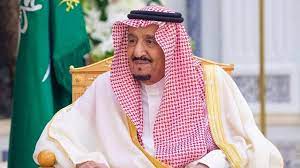By Saeed Shah/Wall Street Journal
Islamabad, January 10: Saudi Arabia said Tuesday that it was considering providing up to $11 billion to Pakistan, a potential lifeline to a country facing default.
The United Arab Emirates and Qatar in recent months have said they might also offer help to Pakistan, with potential loans and investments from Gulf nations now totaling at least $22 billion after the latest announcement from Riyadh. Gulf countries have said they could extend a similar level of support to Egypt, which is also struggling economically.
The support from Saudi Arabia could strengthen Pakistan’s hand in negotiating a restart to a stalled bailout from the International Monetary Fund. Islamabad is so far unwilling to agree to the IMF’s terms for a deal, which include raising electricity and gasoline prices and increasing taxes.
The country’s foreign-currency reserves are fast running out, with financial markets hoping that the IMF program can be put back on track within days.
Pakistan only has around $4.5 billion in official foreign-currency reserves, financial analysts estimate. In January and February this year it is due to repay debt of $6.4 billion, according to figures from the central bank. By December, it must repay a further $12.8 billion, according to the central bank.
Saudi Arabia said Tuesday that it would study increasing its investment plans for Pakistan to $10 billion from $1 billion and would also study raising its loan deposit with Pakistan’s central bank to $5 billion from the current $3 billion, “confirming the Kingdom’s position supportive to the economy of the Islamic Republic of Pakistan and its sisterly people.”
The news followed a visit by Pakistan’s new army chief, Gen. Asim Munir, to Saudi Arabia, where he met Crown Prince Mohammad bin Salman. In the meeting, “they reviewed bilateral relations and the ways of enhancing them,” Riyadh said Monday.
Pakistan is a close partner to Saudi Arabia, including providing soldiers for guarding sites and training Saudi troops. Millions of Pakistanis work in Saudi Arabia.
Pakistan has also drawn in recent months on its other close allies, in the Gulf and China, as it struggles to repay loans taken out over the last decade.
Pakistan’s Prime Minister Shehbaz Sharif will visit the U.A.E. later this week, and Islamabad hopes his hosts will roll over a $2 billion loan due to mature shortly and provide additional financing. The U.A.E. pledged last year to invest around $2 billion in Pakistan. Qatar has said it would invest $3 billion in Pakistan.
None of the Gulf nations’ investment plans, mostly likely to involve the purchase of state-owned enterprises, have so far materialized. Saudi Arabia has also floated the idea of building a large oil refinery in Pakistan.
China has provided a $4 billion loan deposit with Pakistan’s central bank. Around a third of Pakistan’s debt is held by Beijing. In recent years, Beijing has carried out a multibillion-dollar infrastructure-building program in the country, a showcase for its global Belt and Road Initiative, which seeks to spread Chinese influence through large construction projects.
There are few ready investment opportunities in Pakistan for Gulf nations, while its cash needs are immediate, said Samiullah Tariq, head of research at Pakistan Kuwait Investment Company, a local financing group. Despite the Saudi announcement, Pakistan still needs the IMF, he said.
“There is a liquidity crunch,” said Mr. Tariq. “We need the money right away.”
Only a $2 billion extra deposit to Pakistan’s central bank from Saudi Arabia appeared to be potentially immediate cash. In the past, Gulf countries have made loans conditional on Pakistan being in an IMF program. It was unclear whether this also applied to Tuesday’s announcement from Saudi Arabia. There was no immediate comment from the Pakistani government.
The prime minister, Mr. Sharif, said Monday that Pakistan was hoping for a pause to the IMF’s harsh loan conditions. He faces an election later this year and said that he couldn’t heap yet more hardship on his population.
The fund hasn’t indicated if it will relent on the conditions, leaving it in a standoff with the Pakistani government. Pakistan’s finance minister and the IMF held talks Monday, but there was no announcement of a breakthrough.
The government has stopped many imports to save dollars, while some factories have halted production because they can’t import parts or machinery.
A gap of more than 10% has meanwhile opened up between the official exchange rate of the rupee to the dollar and the actual rate available in the market. That has pushed significant money flows outside banking channels as Pakistan’s overseas workers and others sending money home take advantage of the better, unofficial exchange rate.
Economists say Pakistan risks a default within the next year or so. They say that a debt restructuring, with some debt forgiveness and some rescheduling, while still a default technically, would provide a more orderly way out of the debt crisis rather than the kind of disorder seen in Sri Lanka when it defaulted last year.
There was better news for Pakistan from a fundraising event in Geneva on Monday, to help the country recover from flooding last summer. Multilateral lenders such as the Islamic Development Bank and trade blocs and nations including the European Union, China and the U.S. pledged some $9 billion to help rebuild, according to a tally announced by Pakistan. Most of the money was in fresh loans from multilateral agencies.
END
The post Saudi Arabia signals it could provide Pakistan an $11 billion lifeline appeared first on NewsIn.Asia.
Source: NewsAsia


